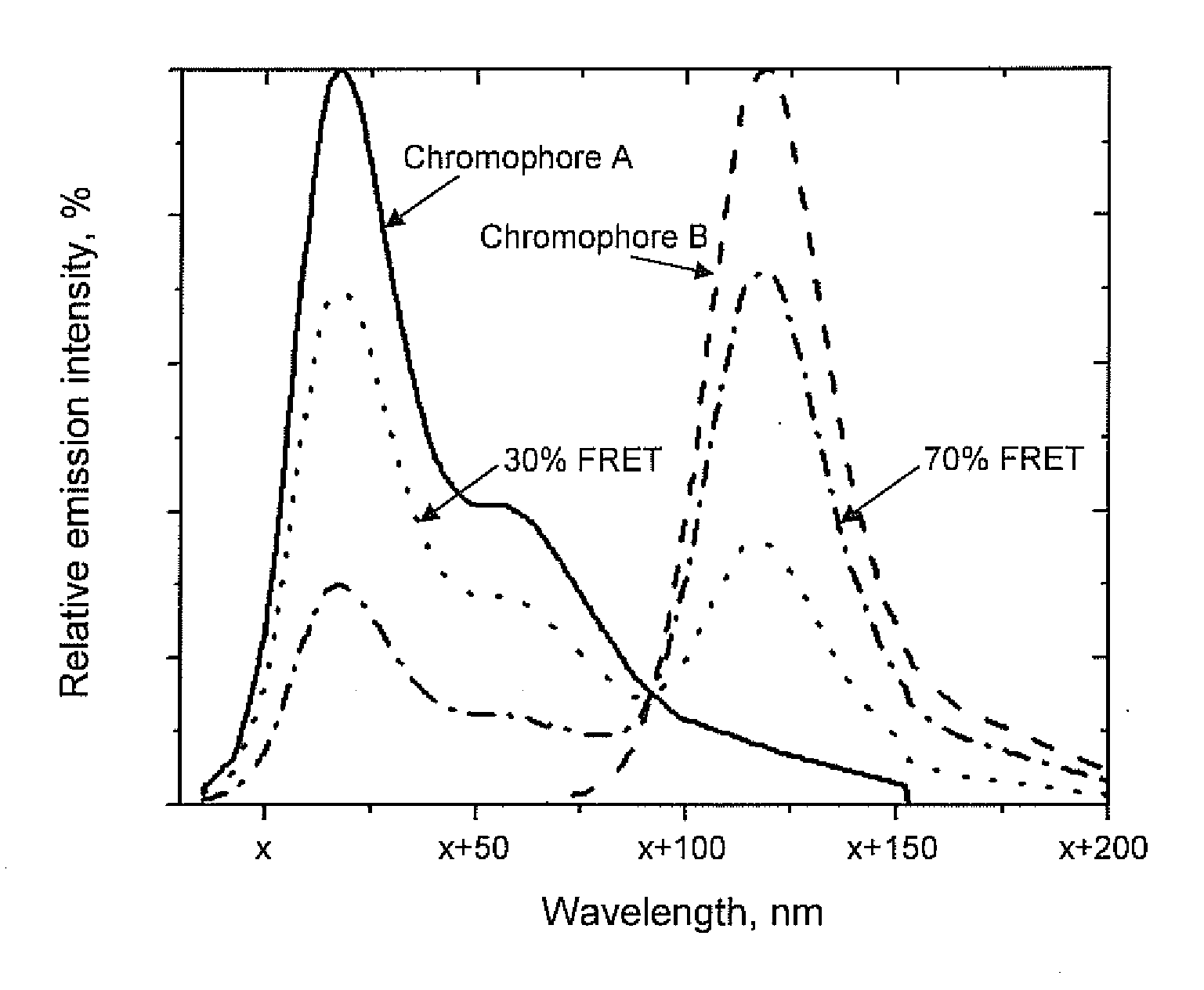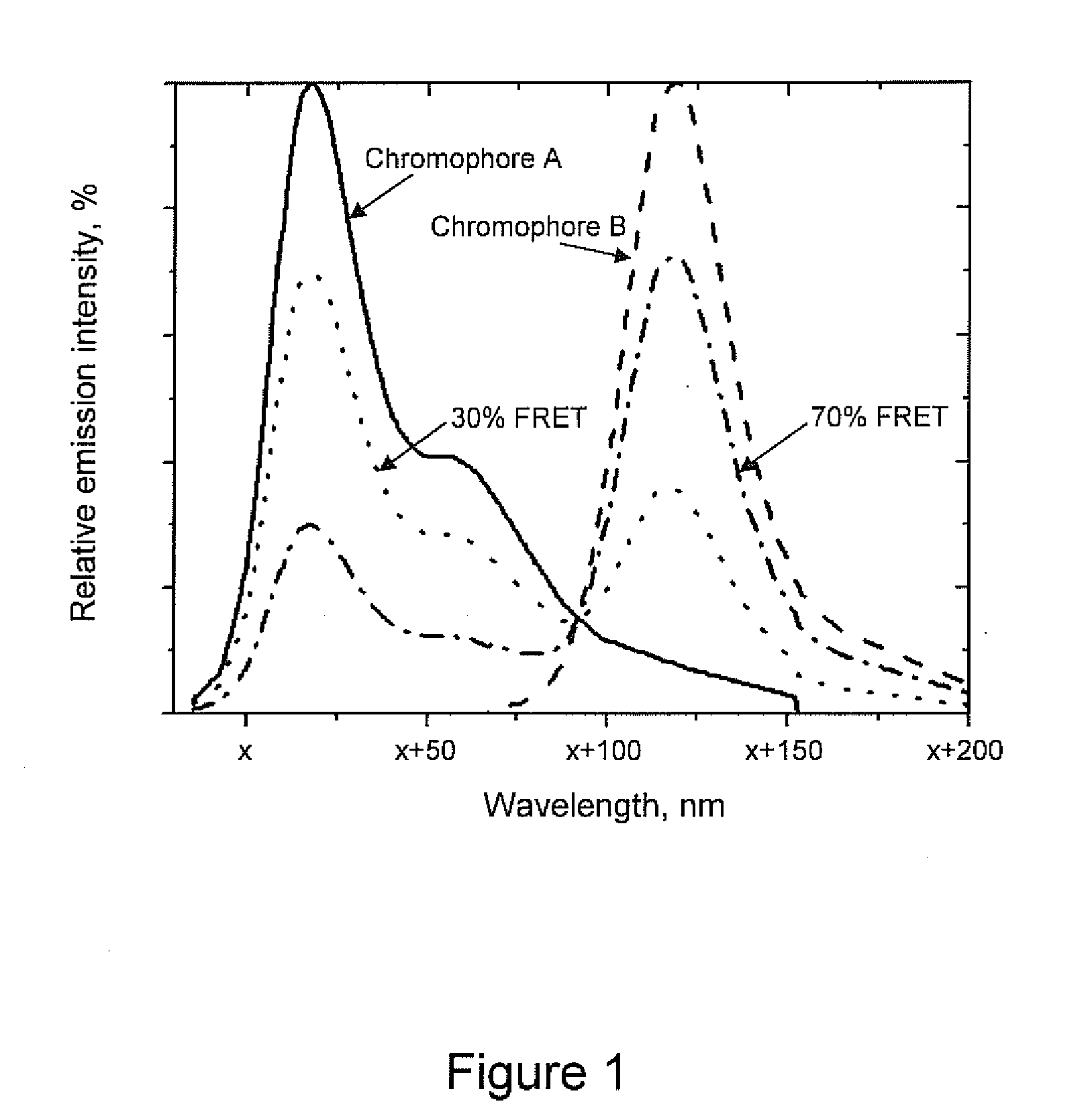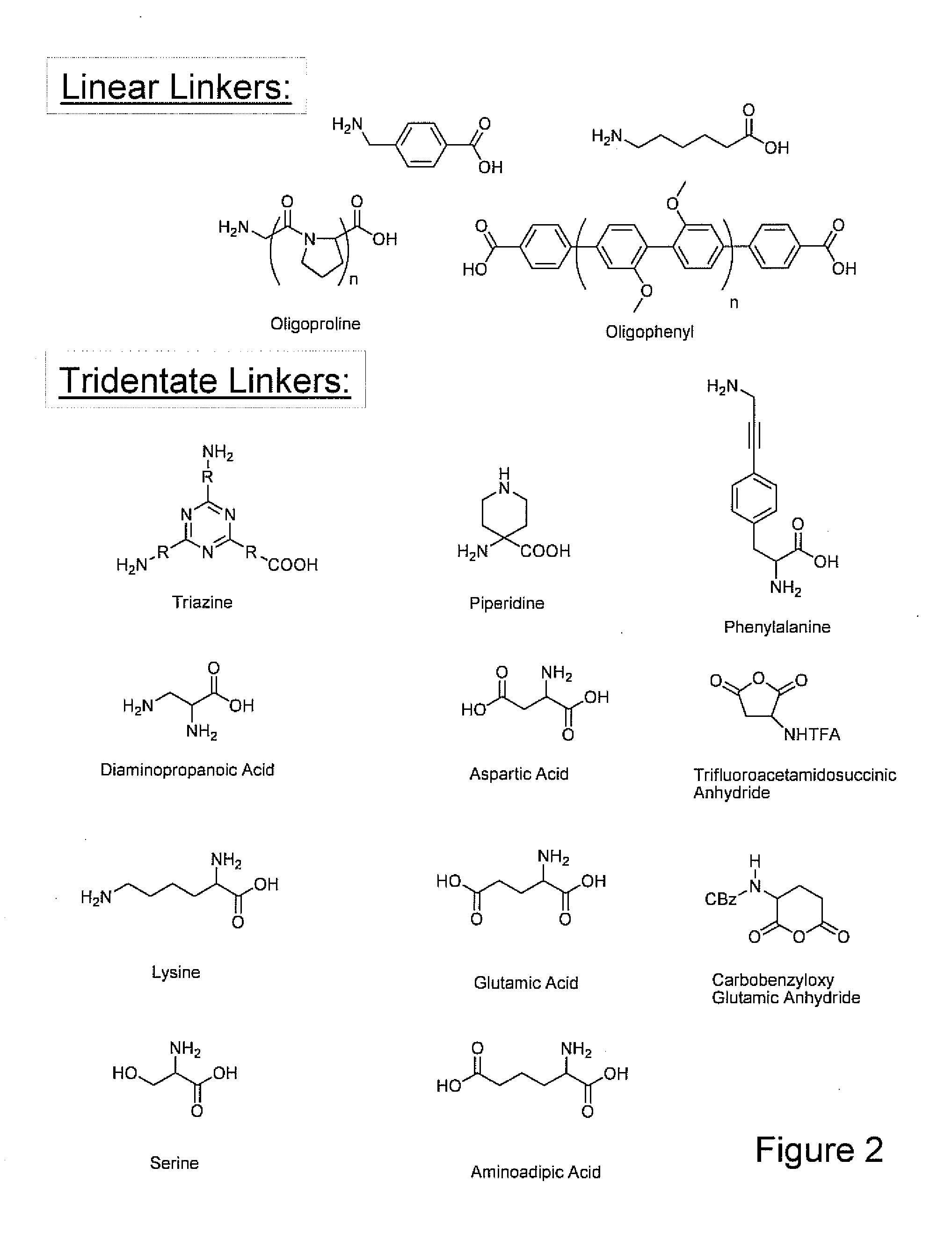[0014]In certain embodiments, methods are provided for distinguishing between two labeled compounds in an analytical reaction, e.g., by labeling the first labeled compound with a FRET pair in a first orientation ensuring a first FRET efficiency, labeling the second labeled compound with the FRET pair in a second orientation ensuring a second FRET efficiency, combining the two labeled compounds in an analytical reaction, subjecting the analytical reaction to excitation radiation, detecting a signal emitted from the analytical reaction, and analyzing the signal to determine a signal FRET efficiency. If the signal FRET efficiency is equal to the first FRET efficiency the signal originated from the first labeled compound, and if the signal FRET efficiency is equal to the second FRET efficiency the signal originated from the second labeled compound, and the two labeled compounds are thereby distinguished in the analytical reaction. Analyzing the signals emitted from an analytical reaction typically involves determining emission intensities at emission wavelengths in emission spectra. In certain preferred embodiments, a single radiation wavelength of the excitation radiation excites both the FRET pair in the first orientation and the FRET pair in the second orientation. In some embodiments, four labeled compounds are distinguished from one another by also including in the analytical reaction a third labeled compound with the first chromophore of the FRET pair (but not the second chromophore) and a fourth labeled compound with the second chromophore of the FRET pair (but not the first). If the signal FRET efficiency is not equal to either the first FRET efficiency nor the second FRET efficiency, the signal is further analyzed to determine if it is characteristic of an emission spectrum of the first chromophore or the second chromophore, thereby identifying the origin of the signal as being the third labeled compound or the fourth labeled compound, respectively. As such, four different labeled compounds are distinguishable from one another in an analytical reaction using only two chromophores, e.g., by labeling two of the compounds with a single different chromophore, and by labeling the other two compounds with FRET labels containing both chromophores in different conformations to provide detectably different emission spectra.
[0015]Further, methods are provided for identification and detection of individual labeled reactants in a reaction mixture comprising multiple different reactants, where the reactants can be nucleic acids (e.g., nucleotides or nucleotide analogs, nucleic acid segments, primers, etc.), tRNA analogs, ligands for a receptor, antigens, binding partners, etc. For example, each of the multiple different reactants are labeled with detectably different chromophore-containing labels, at least two of which are FRET labels that emit at substantially similar wavelengths but a distinctly different emission intensities. The different reactants are combined in a reaction mixture, and individual labeled reactants are detected by exposing the reaction mixture to excitation radiation and detecting an emission spectrum of each of said chromophore-containing labels. In certain preferred embodiments, a single radiation wavelength of the excitation radiation excites the FRET pairs in the reaction mixture. In certain preferred embodiments, a first of the FRET labels in the reaction mixture is configured to ensure a first distance between the constituent chromophores and a second of the FRET labels in the reaction mixture is configured to ensure a distance between the constituent chromophores that is different than the first distance. In some embodiments, the two distances are chosen to ensure inefficient energy transfer resulting in submaximal FRET efficiencies, thereby producing distinct and multi-peak (e.g., multi-spectral or dual-spectral) emission spectra. For example, the multi-peak emission spectra typically comprise a peaks resulting from emission from both the donor and acceptor chromophore in a FRET label. The different FRET labels in such reaction mixtures typically comprise different linkers that are structurally different from one another, e.g., that provide for a different spacing or distance between their constituent chromophores. In some embodiments, at least one of the chromophore-containing labels is not a FRET label, and such non-FRET labels may compris
 Login to View More
Login to View More 


